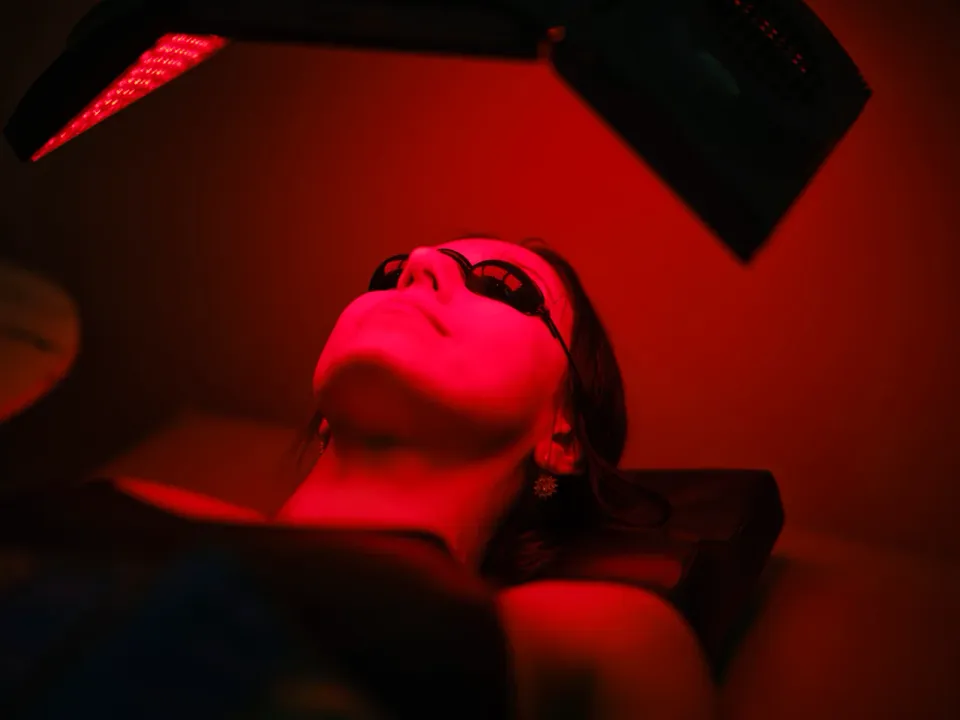💡 The Surprising Science Behind Red Light Therapy

Let’s rewind to the early '90s. NASA scientists were not trying to spark a skincare revolution. They were just figuring out how to grow lettuce in space. 🌱✨
But while experimenting with red and near-infrared (NIR) light to help plants thrive in zero gravity, they stumbled on something… weirdly wonderful: the same wavelengths that helped plants grow also revved up healing in human cells.
Yep. Red light therapy was literally born in outer space. 🚀
So… what is red light therapy, exactly?
🚨 This Is Not Your Average Desk Lamp
Red light therapy (RLT)—also called photobiomodulation—uses specific wavelengths of light (usually 630–660 nm for red and 810–850 nm for near-infrared) to stimulate your mitochondria, the tiny power plants in your cells.
And when those mitochondria soak up the red/NIR light? They go from sluggish to supercharged.
They:
✅ Crank out more ATP (aka cellular energy)
✅ Lower inflammation and oxidative stress
✅ Boost healing and regeneration at the cellular level
Translation: It’s like giving your cells a protein shake and a pep talk.
🔥 Why Everyone From Biohackers to Grandmas Are Glowing Up
This isn’t some influencer-driven fad (looking at you, charcoal toothpaste 😬). Red light therapy has over 5,000 peer-reviewed studies backing it.
Let’s break down the big five benefits:
1. 🧠 Sharper Brain, Calmer Mind
Red/NIR light crosses the blood-brain barrier—seriously—boosting blood flow, reducing brain fog, and supporting cognitive function. Some early studies suggest it might even help with PTSD and early Alzheimer’s.
🧪Source: Journal of Neuroscience Research, 2018
2. 💆♀️ Smoother Skin, Fewer Breakouts
Red light stimulates collagen and elastin production (bye-bye, fine lines) and fights acne-causing inflammation. It’s like skincare that works from the inside out.
🧪Source: Dermatologic Surgery, 2014
3. 🏃 Faster Recovery After Workouts (or Couch Lifting)
Athletes use it to bounce back faster. It reduces DOMS (delayed onset muscle soreness), helps heal injuries, and may even improve strength if used before workouts.
🧪Source: American Journal of Physical Medicine & Rehabilitation, 2016
4. 😴 Deeper Sleep, Naturally
Unlike blue light (which screams "WAKE UP!"), red light helps your body produce melatonin—the sleep hormone. More melatonin = better zzz’s.
🧪Source: Sleep Science, 2012
5. 😌 Better Mood & Balanced Hormones
Preliminary research shows red light may increase serotonin and endorphin levels. Bonus? It can support thyroid health, especially for people with Hashimoto’s.
🧪Source: Lasers in Medical Science, 2015
💡 Quick Tips for Getting Started with RLT
You don’t need to remortgage your house to get glowing. Here’s what to look for in an at-home red light device:
- Dual Wavelengths: 660nm (red) + 850nm (NIR)
- High Irradiance: At least 100mW/cm² for real results
- Low EMF: Because you’re trying to heal, not fry
- 10–15 minutes per area, 3–5x per week = chef’s kiss
Pro tip: You don’t have to “feel” anything. RLT is subtle and cumulative. Think of it like brushing your cells' teeth.
P.S. Curious but skeptical?
That’s fair. I, too, was burned by jade rollers and celery juice. But RLT has legit science, zero sketchy side effects, and no woo-woo required. Just light, cells, and a whole lot of healing potential.
Shine on,
Harper Blythe
